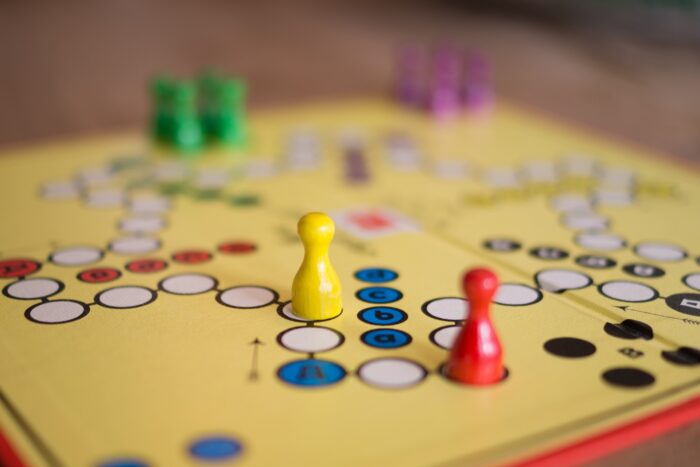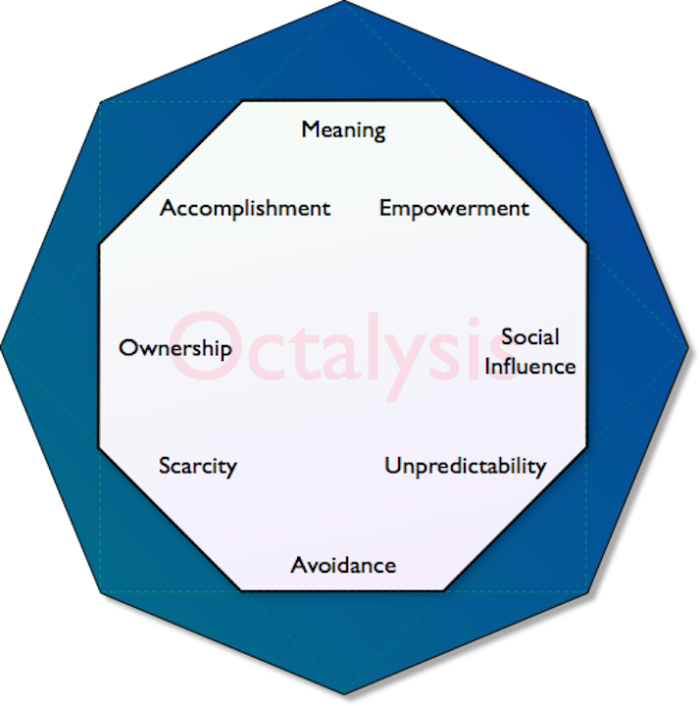Gamification has changed the way we think of and implement business activities in a multitude of ways. It has become a standard system for how we arrange incentive structures within apps and websites in particular. Furthermore, the ethos behind it has made its way into industries as broad-ranging as education, research, and fitness.
It’s hard not to see why: gameplay elements make work more productive, fun, and engaging. It can help add quantifiable metrics to tasks and give a sense of direction to activities. Gamified elements also tap into our innate sense of competition, cooperation, and reward-seeking to optimize work processes.
This article will serve as a brief primer on the concept and highlight how it can be used in digital marketing and how gamification is changing business.
Introduction to Gamification
Gamification is the process of applying typical elements of game-playing to create incentives for engaged customers. These structures give users or consumers points or rewards – which can be real or arbitrary – when they engage in some form of the desired action.
The basic premise is that companies can apply aspects of gameplay such as rewards, points, competition, or time limits to create a more engaging experience. These aspects draw people in and imbue more longevity to consumer-centric campaigns or internal activities. Companies have applied game concepts going back decades or even centuries with gamified rewards programs or competitions.
However, in recent years, the study of gamification has fine-tuned the process immensely. Think of how every company uses some form of digital marketing tool or incentive to create cyclical loops of customer behaviour. If you’ve ever logged into a fast food website and accrued points for ordering something, answering an online survey, or recommending a service, that’s a simple example of gamification.
On a more complex level, gamification has become the driving force of digital businesses. Some industries rely entirely on Gamified models to create customer value and engagement, especially on digital platforms. Social gamification is an inherent aspect of social media apps like Twitter or Facebook, where posting and sharing become a numbers game amounting to how many followers an account can accrue, like earning points in a game and the sweet dopamine rush that comes with it.
Benefits of Gamification Strategies

While gamification certainly creates more engagement, it has other benefits as well. Point-keeping systems can help gather better analytics about various business or marketing activities. They can also help keep track of interest over time, peak usage hours, and help create competition that fosters higher levels of usage, interest, and emotional investment.
Gamified Fitness apps are a great example of how incentives and points can be used to promote healthier behaviour. The gamification of mobile apps, in particular, allows for scorekeeping and routines that promote positive behaviours. On top of that, these apps can gamify important metrics to highlight progress. For example, Home Workout helps keep track of burnt calories and lists your weight loss.
These sorts of systems can create long-term incentives aimed at keeping users engaged in tasks that people might lose interest in without constant reminders. These forms of gamified tracking help keep people invested by showing off their progress over time. This is how apps like Duolingo have leveraged the benefits of gamified learning to make difficult activities easier.
Additionally, gamification and incentive programs can serve as effective marketing tools. They can also turn promotional activities into a series of customer competitions such as with retweets or TikTok hashtags. Similarly, Nike’s run club app plugs into this competitive spirit and has consumers compete against each other in physical activities.
Gamification’s core advantages and social trigger points can be easily explained by the Octalysis framework:

Source: Yu-Kai Chou (via Wikimedia Commons)
Digital Marketing Applications
Aside from the examples listed above, there are several ways to improve digital marketing with gamification.
Gamified Content
Gamifying content can be as simple as measuring and integrating SEO plug-ins. These may not seem like games but the idea of scoring and ranking inherently produces the mental effect of one and pushes websites to act competitively while paying attention to a kind of leaderboard. But what about actually adding game elements to your content?
Games themselves are a great way to push content and give it a lasting engagement cycle. Adding quizzes, tasks, and prizes to your social media campaigns can get consumers competing to do your marketing simply through the dopamine rush of a well-structured game app.
Gamification in rewards programs is already a common tactic on most fast-food sites but some add novelty game features into the packaging itself. Pizza Hut added an AR version of Pacman to their delivery boxes, allowing users to play the renowned game on their phones when they scan the box.
In 2013, Chipotle introduced The Scarecrow app based on a prior short film. It was a game intended to raise awareness about food factories, animal treatment, and the environmental and bodily harm they cause. A player would engage in tasks like carrying crates full of fresh veggies through dangerous obstacles within a factory.
Gamified Sales Training and Marketing
Surveys have shown that applying game principles to work training greatly enhances productivity. Not only does it harness all of the advantages discussed earlier, but it also creates a fun and easy way for trainees to remember what they were taught when dealing with customers in real life.
McDonald’s was one of the first brands to implement game-based learning for their employees. The company uses a customer interaction simulation game for their new hires, allowing them to roleplay their positions in preparation for the real restaurant.
Combining digital marketing, games, and training has never been easier. Plug-ins like GamiPress and myCred are intuitive add-ons that help optimize content with points, leaderboards, and badges. These can create an experience for both training and monitoring performance in a fun way. They also reward eCommerce achievements and can be connected to sales portals.
Using Gamification to Boost Sales

- Gamified Loyalty Programs
Purchase incentives like points and discount vouchers are well and good, but you can take them to the next level. Adding game elements to these aspects can make them more fun and easier to stick in people’s minds. This is especially true if you add an app or a board game to the mix.
Restaurants have had discounts going back ages but gamifying them makes them positively addictive. Take McDonald’s monopoly game for example. You receive tickets with each purchase and each ticket represents a space on a monopoly game board. The goal is to collect all the pieces of the same colour to be eligible for a prize.
Some users of the McDonald’s program reported being so taken in by it that they were buying meals just to play the game.
- Gamify Customer Service
Companies have long been applying points, badges, and scores for employees who help customers effectively. Customer service incentive programs encourage employees to do well, especially since customer service can be emotionally exhausting.
Certain companies have been linking customer service performance to tangible goods. These can be things like cake or coffee. Other chains use customer service rating apps and performance metrics to create competition between their various franchises.
For example, restaurant operators use ZOOM Nitro Gamification to schedule multi-store contests. A top-performing store can compete with another store with a contest using ZOOM Nitro real-time data, resulting in the winning location receiving rewards and bragging rights. This creates a competitive need for proper customer service.
Gamifying Marketing Research
As the book “Games and Gamification in Market Research” notes, there are several advantages to incorporating game elements into data collection and analysis practices. Gamifying harnesses all the aspects mentioned earlier. However, even beyond that, gamifying research and data collection can help respondents break out of their shells.
Applied gamification in social studies or psychology research can help lower a respondent’s guard and help them participate with more vigour. That said, one has to be careful: sometimes respondents may answer a certain way to win a game. This is not to say a respondent may be lying but rather can be blinded by the incentive into acting on biases.
Market research has been gamified on the internet already. There are so many sites that collect survey data in exchange for bonuses or giveaways or survey snowballing. Sites that sell data on customer preferences (review sites like Yelp are a prime example) have gamified aspects like reviews, data entry, and trust scores.
The role of gamification in education and business research is here to stay and the data bears this out. TalentLMS’s 2019 Gamification at Work Survey finds:
- Over 87% of respondents feel that gamification makes them more productive and happier in their careers.
- 33% approve of adding game-like features to employee training software.
- 83% of those who receive gamified training feel motivated, vs. 61% of those who receive non-gamified work-training feel bored and unproductive.
- 89% believe they would be more productive if their work had more gamification.


